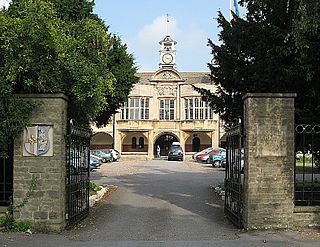This article has multiple issues. Please help improve it or discuss these issues on the talk page . (Learn how and when to remove these template messages) (Learn how and when to remove this template message)
|
Charles Geoffrey Boutcher (1884–1964) was a London-born architect and a partner of the Penang, Ipoh and Johor architectural firm, Stark & McNeill, in Malaysia. His most recognized project is the construction of the Zahir Mosque in Alor Setar. In 1932, he started his own practice under the name of Boutcher & Co., located at 9 Weld Quay, Penang. Boutcher & Co. was the sole Penang-based architectural company to have been resuscitated after the European war. Boutcher also had offices at 19 Beach Street in Penang and at 21 Hale Street in Ipoh. The practice was terminated only after Boutcher retired in 1953. [1]

Penang is a Malaysian state located on the northwest coast of Peninsular Malaysia, by the Malacca Strait. It has two parts: Penang Island, where the capital city, George Town, is located, and Seberang Perai on the Malay Peninsula. The second smallest Malaysian state by land mass, Penang is bordered by Kedah to the north and the east, and Perak to the south. Currently, Penang is home to Southeast Asia's Longest bridge connecting the island to mainland.

Ipoh is the capital city of the Malaysian state of Perak. Located by the Kinta River, it is nearly 180 km (110 mi) north of Kuala Lumpur and 123 km (76 mi) southeast of George Town in neighbouring Penang. As of 2010, Ipoh contained a population of 657,892, making it the third largest city in Malaysia by population.

Johor, formerly known as Johore, is a state of Malaysia in the south of the Malay Peninsula. Johor has land borders with the Malaysian states of Pahang to the north and Malacca and Negeri Sembilan to the northwest. Johor shares maritime borders with Singapore to the south and Indonesia to both the west and east. Johor Bahru is the capital city and the economic centre of the state, Kota Iskandar is the seat of the state government, and Muar serves as the royal town of the state. The old state capital is Johor Lama. As of the 2015 census, the state's population is 3,553,600. Johor has highly diverse tropical rainforests and an equatorial climate. The state's mountain ranges form part of the Titiwangsa Range, which is part of the larger Tenasserim Range connected to Thailand and Myanmar, with Mount Ophir being the highest point in Johor.



















